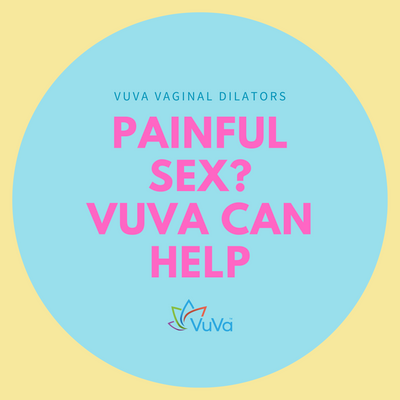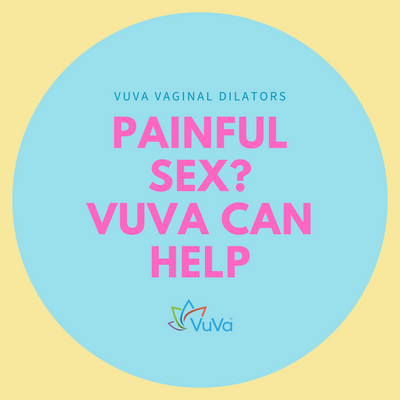
| Tara Langdale
Vaginal Expanders: When and How to Use Dilation Therapy
Are you experiencing painful vaginal penetration during sexual intercourse? If so, you’re not alone. Female sexual medicine research shows that 43% of women experience some form of sexual dysfunction. The good news is that vaginal expanders can treat sexual issues. Vaginal expanders improve sexual activities naturally without any side effects.
What are vaginal expanders?
The more common name for vaginal expanders is vaginal dilators. Healthcare professionals commonly prescribe vaginal dilators to help stretch and lengthen your vagina. For many different reasons (physiological and psychological), your vaginal tissue has become tight and sore or constricts uncontrollably before, during, or after intercourse.

In some cases, even inserting a tampon or having a gynecological exam causes vaginal muscle spasms and pain. Sex therapists recommend using vaginal expanders as dilation therapy for women experiencing ongoing vaginal pain.
What is dilation therapy?
Dilation therapy consists of using vaginal expanders to open the vaginal area slowly. The treatment occurs in the privacy of your home and may take a few weeks or months before genuine improvement occurs. Clinical research shows that dilation therapy works by improving the elasticity of your pelvic floor muscles over some time.
When to use dilation therapy?
In sexual medicine, there are many reasons women may need dilation therapy. For some women, the cause of painful sex is unclear. For others, cancer treatment is the source, but regardless of "why," vaginal dilation therapy has helped countless women. When to use dilation therapy depends on your healthcare provider's advice, but generally prescribed when you have one of the following conditions.
Vaginal stenosis
Vaginal stenosis is a side effect of having pelvic floor radiation treatment or radiation therapy as a cancer treatment. It can also occur from having genital surgery. According to the Sloan Kettering Cancer Center, women usually undergo vagina and sexual changes after cancer treatment. The procedures cause a lack of vaginal flexibility and narrowing of the vagina, resulting in possible scar tissue and vaginal atrophy (dryness). When this happens vaginal penetration of any kind may come with severe pain, throbbing or even a burning sensation.
Vaginismus
Vaginismus is an involuntary spasm or contraction of the pelvic floor muscles. The reasons for vaginismus may be physical or psychological but regardless cause pelvic pain. There are two classifications of vaginismus— primary and secondary.
Sexual medicine classifies primary vaginismus as being present throughout a woman's life. Perhaps, the sexual dysfunction didn't become apparent until she had her first pap smear or tried to have sex for the first time. Primary vaginismus makes sexual penetration extremely painful or impossible.
Secondary vaginismus begins after a woman has had an active sex life, and suddenly sexual intercourse becomes painful. The causes for this might be having a traumatic experience or relationship/emotional issues. Or no direct link is apparent. Vaginismus is more common than people understand and is nothing to be ashamed about experiencing.
Menopause symptoms
Menopause is a change in hormone levels that usually occurs when a woman is in her early 50s. It's a natural part of life and signals the end of a woman's reproductive years — symptoms of menopause cause night sweats, insomnia, weight gain, vaginal dryness, and more.
Conventional treatment for menopause is hormone therapy; although, this has become controversial in the last few years. Decreasing estrogen levels can cause vaginal tissues to become dryer and thinner, resulting in pain and sexual problems. Dilator therapy can help ease these symptoms.
How to use dilation therapy?
Dilator therapy is easier than you think. It's important to note that vaginal dilators are not sex toys or vibrators, but medical devices used to help women overcome painful vaginal penetration and sexual problems. How to use dilation therapy depends on each person, but generally, the following steps help ensure success.
Dilation therapy steps
Step One
The first step in dilation therapy is to choose high-quality vaginal dilators. The dilator size you want depends on how much pain you can stand when inserting it. It's best to start with the smallest sized dilator when beginning treatment. VuVa™ Dilators come in single packages, but also combo or full set.
Vaginal dilators also come in medical-grade plastic, soft silicone, and can have Neodymium magnets. Once you've chosen the right dilator, you're ready for dilation therapy.
Step two
Vaginal dilators encourage muscle relaxation. When you begin treatment, choose a quiet, private place for therapy. Privacy helps your mind and muscles relax.
Step three
Before using the dilator, wash it thoroughly with soap and water. Dry the dilator entirely before beginning.
Step four
Lay in a comfortable position on your back with your knees raised. Add a liberal amount of water-based lubricant to the dilator. Personal lubricants help ease the pain of inserting the dilator.
Step five
Slowly insert the dilator as far as you can comfortably. You don't want to cause yourself too much pain and discomfort, but it's therapy, so you need to push yourself a little for vaginal dilators to work overtime.
Step six
Keep the vaginal dilator inserted for 2-30 minutes or for as long as you're comfortable with doing. At first, you may only be able to stand a few minutes, and you may want to quit. This is normal. Sexual problems bring up intense physical and emotional pain. Sex therapists recommend practicing deep breathing and remember that this too shall pass.
You must lie on your back during treatment. Don't try to move or walk around. Walking around may cause more pain and not recommended at all with vaginal dilators.
Step seven
After each session, clean and dry your vaginal dilator. Please keep it in a safe and dry place. When you're ready to start treatment again, you can use the same size dilator as before or increase the size as you progress.
As part of treatment, you may experience some mild bleeding afterward. Spotting is normal, but if the problem persists, consult with your doctor. Also, peeing after taking out the dilator helps prevent uterine tract infections (UTI). While this is uncommon, the Sloan Kettering Cancer Treatment Center recommends this as a prevention method.
Is dilation therapy right for me?
Female sexuality is beautiful and intricate. Dilation therapy is a safe and natural way to help overcome sexual problems associated with painful vaginal penetration. The choice is up to you. When you're ready to experience the power of sexual healing, try VuVa™ Dilators. You’ll be amazed at how trans formative the experience can be for you.
















